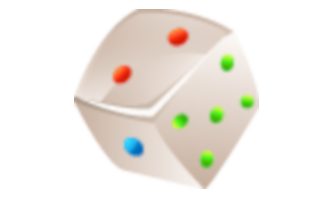Applying Percents
Mathematics, Grade 7
Applying Percents
Study Guide

Applying Percents
Flash Cards

Applying Percents
Quiz

Applying Percents
Worksheets

Applying Percents
Games

Study Guide Applying Percents Mathematics, Grade 7
❮
1
/
3
❯
APPLYING PERCENTS Applying percents is a term that refers to the different ways that percents can be used. The percent of change refers to the percent an amount either increases or decreases based on the previous amounts or numbers. The percent of change can be used when determining the percent increase of the cost of any item over time, for example movie tickets, clothing or food. It can also be used to determine the percent decrease in the value of any item over time such as a car, house or boat. Applying percents also means to calculate simple interest using the interest equation, I = P · r · t, w here P is the principal; r is the rate and time is the time. In this equation, the rate is a percent that is changed to a decimal and then calculated. Calculating discounts, sales tax and tip are others ways to apply percents in real life applications. How to apply percents Percent increase or decrease can be found by using the formula: percent increase/decrease = the difference of the increase or decrease divided by the original amount. If a number changes from 33 to 89, the percent of increase would be: Percent of increase = (89 -33) ÷ 33 = 56 ÷ 33 ≈ 1.6969 ≈170% When a number decreased, the percent of decrease is found using the same formula. If a number changes from 75 to 55, the percent of decrease would be: Percent of decrease = (75 - 55) ÷ 75 = 20 ÷ 75 ≈ .266667 ≈ 27% © Copyright NewPath Learning. All Rights Reserved. Permission is granted for the purchaser to print copies for non-commercial educational purposes only. Visit us at www.NewPathLearning.com.
Simple interest is also calculated using percents. The interest equation, I = P · r · t, is used to find the simple interest when given the principle, rate and time are given. If interest is given, along with two other values, such as rate or time, inverse operations can be used to solve for the missing value. For example, how long should $1000 be in an account at a rate of 5% in order to earn $200 in interest? Ex. I = P · r · t → 200 = 1000 · 5% · t → 200 = (1000)(.05)t → 200 =50t → 200/50 = t → 4 = t Since t = 4, it means that the money should be in the account for 4 years in order to earn $200 interest. Applying percents can also be used to find the sales tax on a bill, the tip for a bill or the discount if an item is marked down a certain percent. Ex. The bill is $53 and the tax is 8%, how much tax is there? To find the tax, multiply $53 by .08, to get the tax amount of $4.24. The same is done when figuring a tip or discount off clothing or any item. The percent of discount can also be found by using the percent decrease formula. For example, if a dining room table is originally $899 and now it is marked $699, the percent discount would be: Percent discount = (899 - 699) ÷ 899 = 200 ÷ 899 ≈ .2225 ≈ 22% © Copyright NewPath Learning. All Rights Reserved. Permission is granted for the purchaser to print copies for non-commercial educational purposes only. Visit us at www.NewPathLearning.com.
Try This! 1. What is the percent increase of a gallon of milk that was originally $1.79 and is now $2.29? 2. What is the percent decrease in the value of a boat that originally cost $12,000 and now sells for $8,000? 3. What is the simple interest using, I = P · r · t: P = $1000, r = 8%, t = 2 years P = $5000, r = 4%, t = 1 year 4. What is the missing value using, I = P · r · t: I = $500, r = 8%, t = 2 years I = $50, P = $2000, t = 1 year 5. What is 10% tax on a bill of $63? 6. What is 15% tip on a bill of $74 7. What is a 25% discount on a total of $30? 8. What is the percent discount on a desk that originally cost $99 and now costs $59? © Copyright NewPath Learning. All Rights Reserved. Permission is granted for the purchaser to print copies for non-commercial educational purposes only. Visit us at www.NewPathLearning.com.
